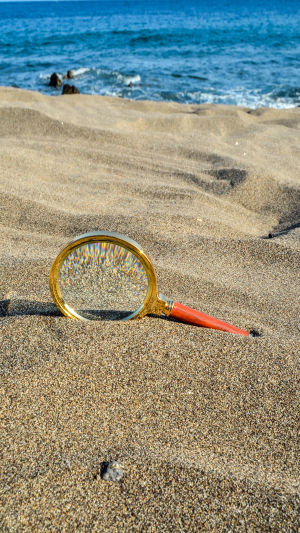Magnifying glasses have been an invaluable tool for centuries, helping us see the world in a new light.
With their ability to enlarge objects and enhance details, these optical wonders have revolutionized various fields, from science and medicine to art and exploration.
The origins of magnifying glasses can be traced back to ancient times.
The Egyptian hieroglyphs depict individuals using simple glass lenses to magnify objects as early as 2600 BCE.
However, it was not until the 13th century that the first documented use of a convex lens as a magnifying glass appeared.
Arab scholar Alhazen described the properties of lenses and their ability to enlarge objects in his book "Book of Optics."
This laid the foundation for the widespread use of magnifying glasses in subsequent centuries.
A magnifying glass typically consists of a convex lens mounted on a handle.
The convex lens is thicker in the middle and thinner at the edges, causing light rays passing through it to converge.
This convergence results in the magnification and enlargement of objects when viewed through the lens.
The focal length of the lens determines the degree of magnification, with shorter focal lengths providing greater magnification.
1. Science and Medicine
Magnifying glasses have been instrumental in scientific research and medical examinations.
Scientists use them to examine microscopic specimens, allowing for detailed observations and analysis.
In medicine, magnifying glasses aid in surgical procedures, enabling doctors to perform intricate operations with precision.
2. Reading and Writing
For individuals with visual impairments, magnifying glasses serve as a useful aid for reading and writing.
They enlarge text and make it more legible, improving accessibility for those with vision difficulties.
3. Art and Design
Artists and designers often use magnifying glasses to scrutinize their work. By magnifying details, they can identify imperfections, refine compositions, and ensure the accuracy of their creations.
4. Archaeology and Forensics
Magnifying glasses play a crucial role in archaeology and forensics by providing a closer examination of artifacts and evidence.
Archaeologists use them to analyze intricate details on ancient objects, while forensic investigators rely on magnifying glasses to study fingerprints, footprints, and other crucial evidence.
5. Hobbyists and Collectors
From stamp collectors to watch repair enthusiasts, hobbyists and collectors benefit from magnifying glasses. These tools allow them to appreciate the intricate details of their items and identify authenticity or unique features that might be missed by the eye.
Magnifying glasses have undoubtedly transformed the way we perceive and interact with the world.
Their historical significance, mechanical characteristics, and diverse applications highlight their importance in various fields.
As we continue to explore new frontiers and push the boundaries of knowledge, magnifying glasses will remain a vital tool, enabling us to see the minute details that might otherwise go unnoticed.





